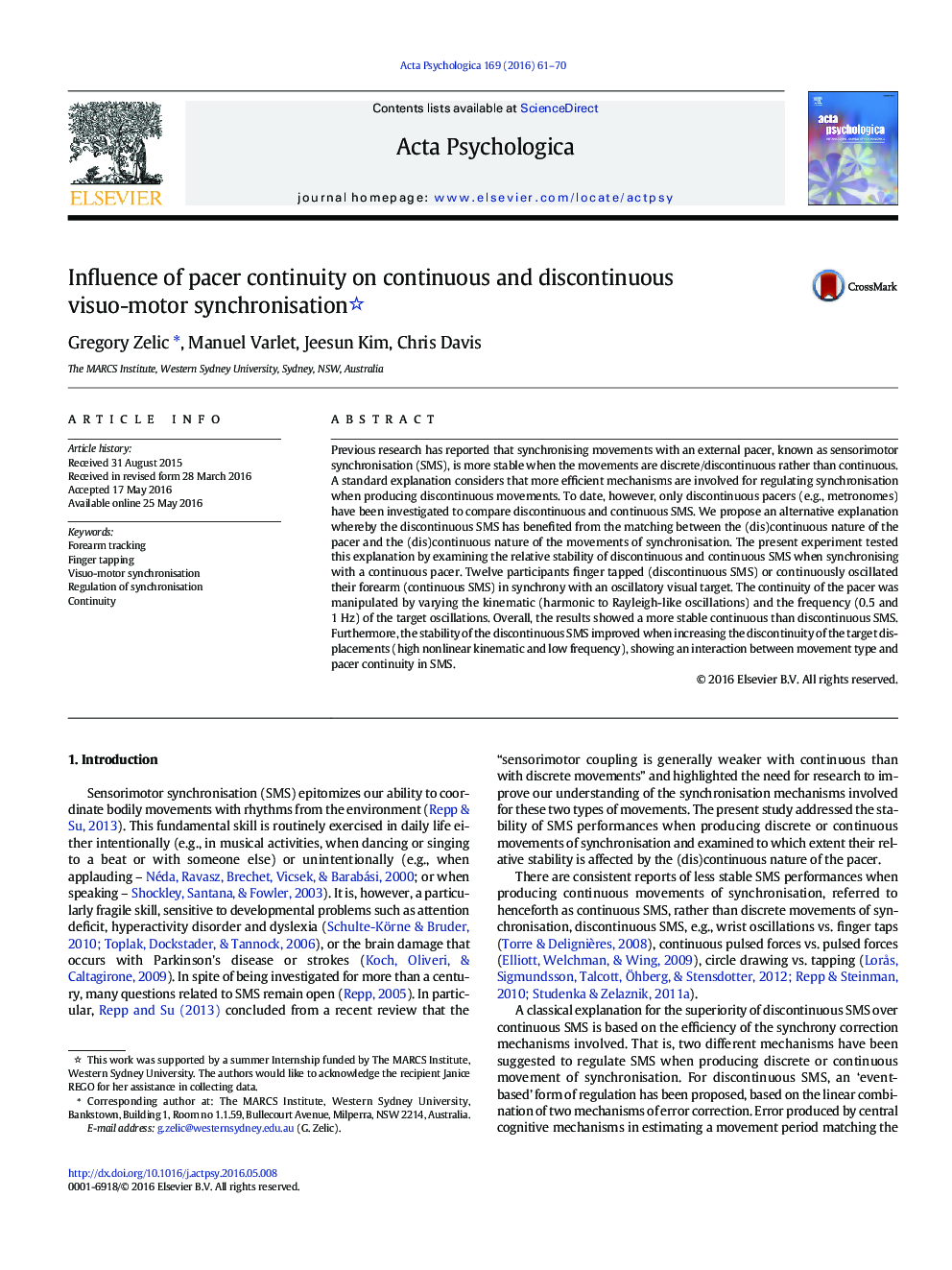| Article ID | Journal | Published Year | Pages | File Type |
|---|---|---|---|---|
| 919623 | Acta Psychologica | 2016 | 10 Pages |
•We compared continuous tracking and finger tapping with a continuous visual pacer.•The continuity of the pacer was manipulated.•Continuous tracking was more stable than finger tapping.•Finger tapping was improved when increasing pacer discontinuity.•Pacer-movement continuity matching modulates visuo-motor synchronisation.
Previous research has reported that synchronising movements with an external pacer, known as sensorimotor synchronisation (SMS), is more stable when the movements are discrete/discontinuous rather than continuous. A standard explanation considers that more efficient mechanisms are involved for regulating synchronisation when producing discontinuous movements. To date, however, only discontinuous pacers (e.g., metronomes) have been investigated to compare discontinuous and continuous SMS. We propose an alternative explanation whereby the discontinuous SMS has benefited from the matching between the (dis)continuous nature of the pacer and the (dis)continuous nature of the movements of synchronisation. The present experiment tested this explanation by examining the relative stability of discontinuous and continuous SMS when synchronising with a continuous pacer. Twelve participants finger tapped (discontinuous SMS) or continuously oscillated their forearm (continuous SMS) in synchrony with an oscillatory visual target. The continuity of the pacer was manipulated by varying the kinematic (harmonic to Rayleigh-like oscillations) and the frequency (0.5 and 1 Hz) of the target oscillations. Overall, the results showed a more stable continuous than discontinuous SMS. Furthermore, the stability of the discontinuous SMS improved when increasing the discontinuity of the target displacements (high nonlinear kinematic and low frequency), showing an interaction between movement type and pacer continuity in SMS.
